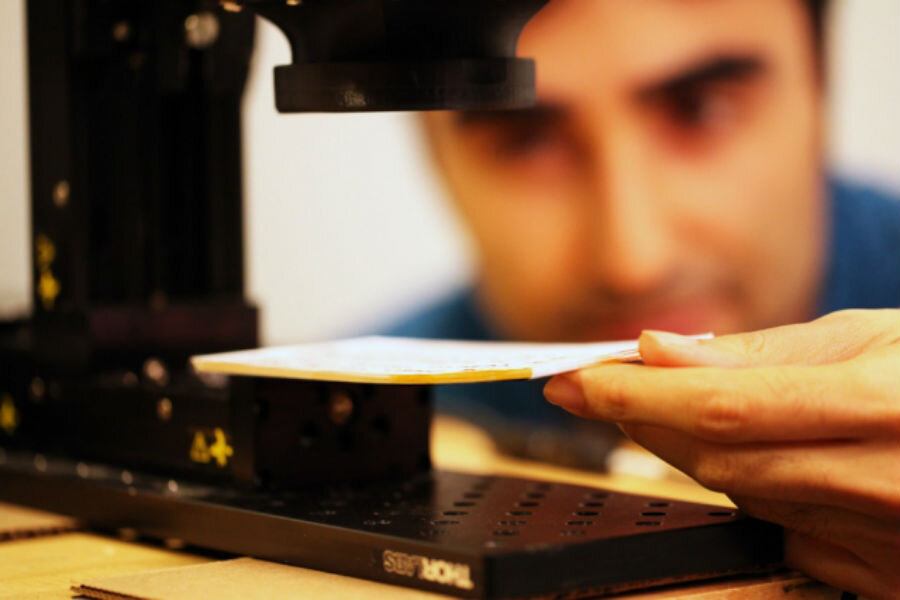How a new technology can help researchers read closed books
Loading...
There’s no excuse to judge an old book solely by its cover anymore, thanks to a new technology that can uncover text even when it's hidden in the pages of a closed binding.
Researchers at Massachusetts Institute of Technology in Cambridge, in collaboration with others at Georgia Institute of Technology, have developed an imaging system that can read through stacked pages, according to a press release. Such a technology would allow historians to sift through antique books or documents with pages too delicate to turn, giving them the opportunity to uncover important historical information without risking the original artifact.
"There's really no limitations on what kind of documents this can be used," Barmak Heshmat, a research scientist who worked on the project at the MIT Media Lab, tells The Christian Science Monitor.
Dr. Heshmat and his colleagues published their research in the open-access journal Nature Communications Friday.
The imaging system uses a form of electromagnetic radiation known as terahertz radiation to separate the blank spaces on a paper from those covered in ink – a precise task that X-rays are unable to complete with the same dexterity. In the study, researchers used a terahertz camera to fire short bursts of radiation at the stacked papers. When the beams reflected back to the camera, it detected the forms of letters on the individual sheets, which are then read by an algorithm capable of distinguishing the letters that can appear distorted.
So far, the algorithm can determine the distance between the camera and the top 20 pages in a stack, but can only decipher the letters on the first nine, as further depths tend to block a strong reflection of the energy.
Dr. Heshmat says The Metropolitan Museum in New York has expressed interest in the new technology, hoping to one day use it to read historic books and documents they could never actually touch.
Similar technologies have arisen recently, with researchers using X-rays to decipher messages on ancient scrolls that would crumble if unrolled or to find a portrait hidden beneath additional layers of paint. Terahertz, however, can absorb chemicals at varying frequencies, allowing it to make a more clear distinction between ink and paper at greater depths.
"It's better for this type of application compared to an X-ray," Heshmat says, noting that while the technology is newer, it's also cheaper, safer, and easier to use on paper.
"So much work has gone into terahertz technology to get the sources and detectors working, with big promises for imaging new and exciting things," Laura Waller, an associate professor of electrical engineering and computer science at the University of California at Berkeley, said of the technology in the MIT release. "This work is one of the first to use these new tools along with advances in computational imaging to get at pictures of things we could never see with optical technologies."
Because terahertz radiation is an emerging technology, the current accuracy of its detectors and the strength of its radiation are in relatively early stages of development. But Heshmat says the technology has the potential to advance, which would allow researchers to read further into a closed book or document and possibly rewrite the algorithm to read double-sided pages.
"We have had great advancements in the terahertz technology," Heshmat says. "With better systems, I think we can go down to 30 pages or so."







